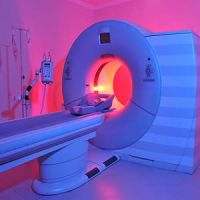Scientists, researchers and clinicians have spent decades trying to find a cure for Alzheimer's disease (AD). In a session at #ECR2020 Digital Congress, imaging experts talked about Alzheimer's disease and neurodegeneration: visualising the invisible.
Lydiane Hirschler and Meike Venooij of the Netherlands and Javier Arbizu of Spain showed how imaging the glymphatic system and integrating clinical, and population imaging holds significant promise in this quest for a cure.
Early diagnosis is critical in Alzheimer's disease, and this is where imaging can play a role. Imaging can help recognise early signs of the disease, and visualising the human glymphatic system, in particular, can provide important information for an accurate and early diagnosis.
While proper clinical imaging assessment is critical for early diagnosis, integrating this information with population imaging could further advance knowledge related to factors that could potentially influence brain health. The problem is that most clinical research conducted in this area uses artificially refined population, which may not always be applicable in real life. Hence, using real population data could provide greater clarify and could improve the assessment of this disease.
Speakers at #ECR2020 highlighted experiences with MRI of the glymphatic system and how it can improve understanding of neurodegenerative disease. They also discussed the role of different PET and SPECT techniques in the differential diagnosis of these disorders. Finally, the speakers talked about current practice for memory clinic imaging in Europe and discussed initiatives in population imaging and the opportunities that are associated with integrating information from large datasets such as The Rotterdam Study or UK Biobank with individual imaging.
The general perception is that Alzheimer's disease is uncurable, but as these experts highlighted during this session, accurate evaluation could be an important step towards finding a cure. Proper assessment could help put the right patients into the right clinical trials, which could eventually lead to the testing of the right drugs.
Source: ECR Connect Live Stream
Image Credit: iStock



























